Schloss Nymphenburg Enclosed
by a wall, this 2-km- (1-mile-) wide park extends west from the palace
1.5 km (1 mile). Picturesque pavilions and follies are scattered
throughout the park, which has been declared a nature reserve to protect
the 300-year-old trees .
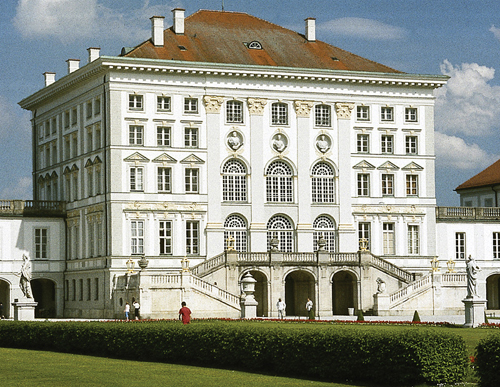
Englischer Garten With
373 hectares (922 acres), the Englischer Garten is the largest urban
park in Germany and the green lung of the city. It serves as a leisure
paradise in summer, when thousands lounge in the sun on the expansive
meadows, and cyclists, joggers, and roller-bladers zoom along the paths.
The surface of the Kleinhesseloher See is dotted with boats, while
surfers try their luck on the Eisbach near the Haus der Kunst. For a
welcome refreshment, try a cool beer in one of the beer gardens
at the Chinesischer Turm, the Seehaus, the Hirschau, and the Aumeister.
An American, Benjamin Thompson, known as Count Rumford (1753–1814),
conceived the idea of the park, which was designed by Ludwig von Sckell
as a prime example of classical landscape park design. In 1837, the
Monopteros, a mock Greek temple, was built on an artificial hill.
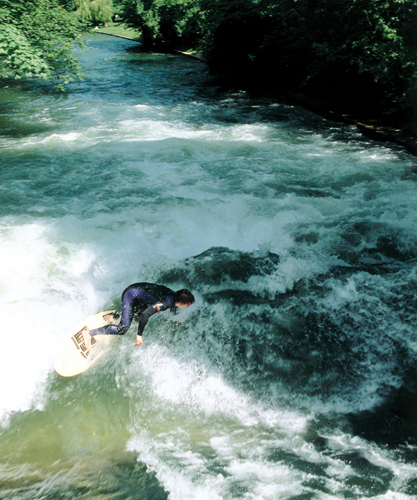
Eisbach, Englischer Garten
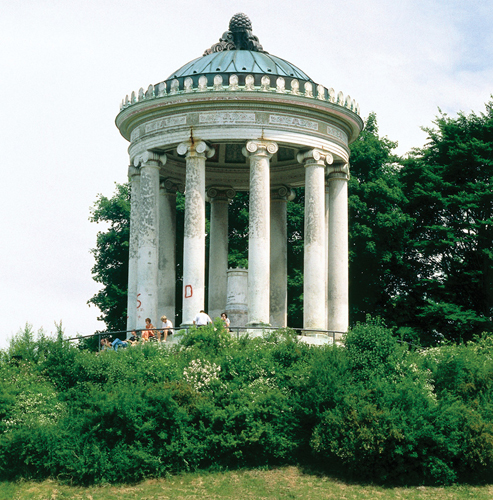
The Monopteros in the Englischer Garten
Botanischer Garten This
is one of the most important botanical gardens in the world. Created in
the park at Nymphenburg in 1914, some 14,000 plant species from around
the globe are cultivated here. In the greenhouses, visitors can embark
on journeys to tropical rainforests or arid deserts.
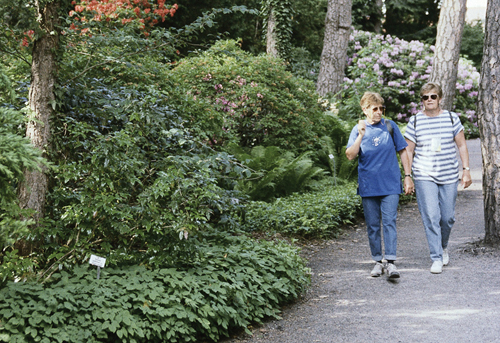
Botanischer Garten
Westpark An
expanse of 72 hectares (178 acres) has been landscaped with numerous
artificial hills, paths, a lake, and ponds. Created for the
International Garden Exhibition in 1983, the western section of the park
features an impressive East Asian ensemble with Chinese and Japanese
gardens, and Thai and Nepalese pagodas. Concerts, plays, and open-air
film screenings are presented on the lakeside stage in summer. Hofgarten In
the 17th century, the Hofgarten was laid out on the north side of the
Residenz in the style of Renaissance gardens. It is bounded on two sides
by long arcades. Rows of mature linden, chestnut, and maple trees
provide welcome shade for boule players in summer. Tango aficionados
meet at the Temple of Diana – a polygonal pavilion with a shallow dome –
for dances on mild summer evenings .
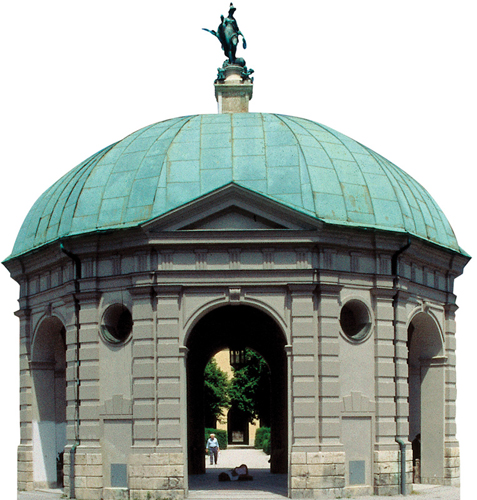
Temple of Diana, Hofgarten
Alter Botanischer Garten During
the 19th century, the former botanical garden was located in this small
park. Today, it serves as the perfect oasis to relax in after a
shopping spree in the nearby pedestrian zone and city centre.
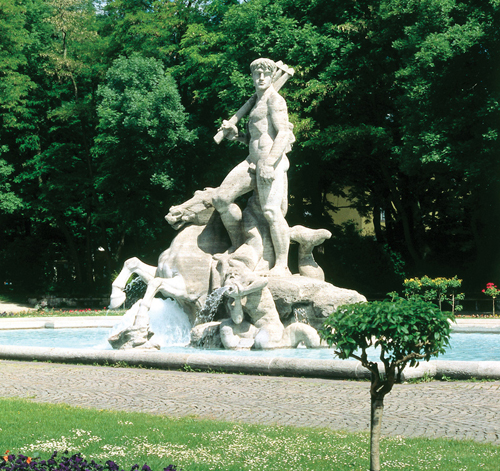
Bavariapark This
park lies directly behind the statue of Bavaria and the Ruhmeshalle,
and stretches westward on the Theresienhöhe. It was designed by order of
Ludwig I and received its current name after the Bavaria statue was
completed in 1850. It is an ideal place to take a break from the hustle
and bustle of the Oktoberfest. Luitpoldpark Created
on the occasion of Prince Regent Luitpold’s 90th birthday, the park was
expanded in 1950 by a hill built out of rubble, the Luitpoldhügel,
which commands a fine view of the city. On clear days, you can see all
the way to the Alps. Hofgarten Schleißheim Stretching
between the Neues Schloss in Schleißheim and Schloss Lustheim, this is
one of the few gardens from the Baroque era that has retained most of
its original form. Enrico Zuccalli (1642–1724) created the basic layout
with canals in 1684. Domenique Girard added parterres and a cascade from
1715 onward, creating the tremendous illusion of depth that
characterizes the principal axis. The cascade, located in front of the
Neues Schloss, was renovated in 1999. River Meadows along the Isar (Isarauen) and Rose Garden The
long stretch of the Isarauen serves as the city’s other green lung.
South of the Wittelsbacher Bridge is the rose garden. In addition to
many rose species, it features a large collection of exotic trees and
shrubs, as well as a small teaching garden with poisonous plants.
|